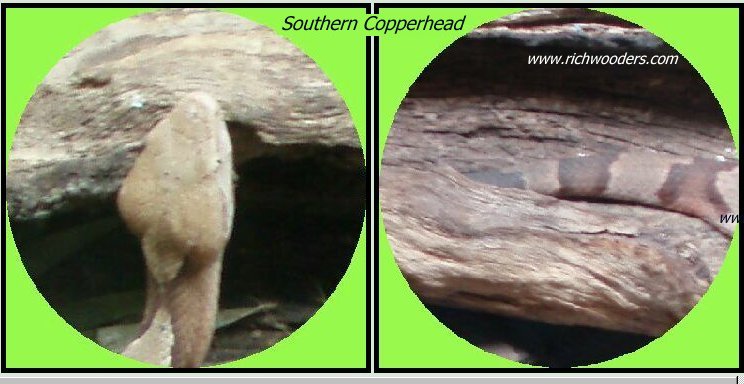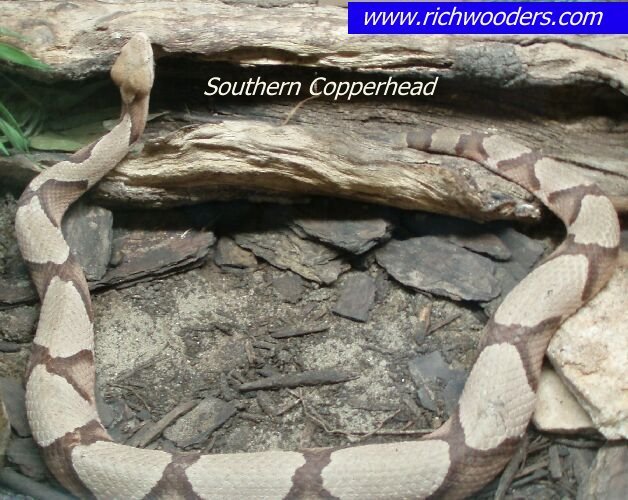Copperhead - (Agkistrodon contortrix)
A venomous snake of the eastern and central United States, having a reddish-brown or coppery orange body marked with darker crossbands arranged in an hourglass pattern, elliptical eyes and short,stubby tail and all juvenile copperheads, has a yellow tail tip. The southern copperhead is similar to the West Virginia northern copperhead but their are a little bit different in coloration and the crossbands.| www.richwooders.com | | Wildlife Index! | ||
| Four species of North to Central American species of crotalid snakes. | |||
| (1) Copperhead (Agkistrodon contortrix) | (2) Southern Copperhead (Agkistrodon contortrix contortrix) | (3) Northern Copperhead (Agkistrodon contortrix mokasen) | (4) (Agkistrodon contortrix laticinctus) |
A snake normally can strike up to one-half or two-thirds of its body length, but if provoked it can strike up to its full body length. A common symptom of a poisonous snakebite from pit vipers (copperheads, cottonmouths or water moccasins, and rattlesnakes) is a burning, fiery, stinging pain at the bite site. Other symptoms could include swelling; skin discoloration; nausea and vomiting; a minty, metallic, rubbery taste in the mouth; sweating and chills. If the pain does not get any worse and remains localized, venom probably was not passed. If the pain becomes severe, venom was probably injected. Copperheads (Agkistrodon contortix) have a wide distribution throughout the central, mid-Atlantic, and southern United States. They can be found on wooded hillsides or in areas near water. Although the bite of a copperhead can be painful, it is unlikely to result in an adult human death.
Dos & Don'ts
Do not confront a snake turn and run
If bitten:

